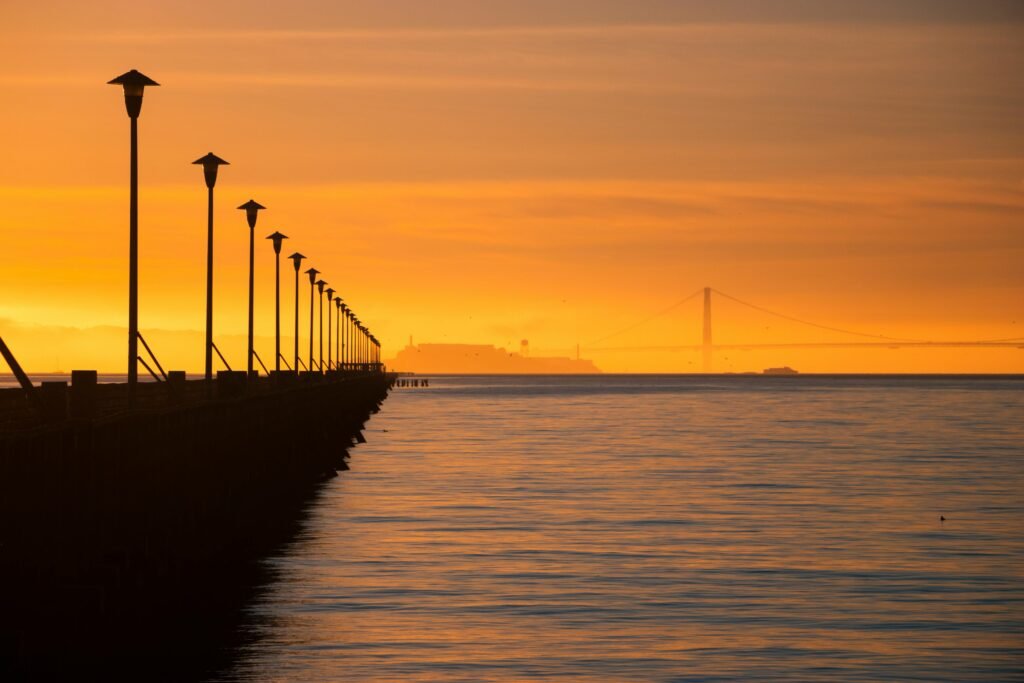Physical Address
304 North Cardinal St.
Dorchester Center, MA 02124
Physical Address
304 North Cardinal St.
Dorchester Center, MA 02124
Leading lines are one of the most effective techniques in both photography and videography for guiding the viewer’s eye through the frame. When used correctly, they create depth, emphasize the subject, and enhance the overall composition. Whether you’re shooting landscapes, portraits, or video scenes, leading lines can make your visuals more compelling and dynamic.
In this article, we’ll break down how to use leading lines effectively for both photo and video composition, the different types of leading lines, and how this technique can transform your work into a visual story.

Leading lines are visual elements within a scene that direct the viewer’s eye toward a specific part of the frame. These lines naturally lead the eye to the focal point or subject, helping to organize the composition and create flow.
Leading lines don’t have to be actual lines; they can be any natural or man-made element that creates a directional path. Think of pathways, rivers, fences, bridges, or even shadows. The key is that they lead the viewer’s eye from one part of the image to another.
Leading lines come in many shapes and forms, and they can appear in both natural and artificial settings. Below are a few common types that are often used in photography and videography.
Horizontal leading lines create a sense of stability and tranquility. They are perfect for landscapes or scenes where you want to emphasize balance or a wide expanse.
Vertical leading lines convey strength, power, and growth. They often direct the viewer’s eye upward or downward, adding a sense of height or depth to the image.
Diagonal lines create a sense of movement, energy, and tension. These lines lead the viewer’s eye across the frame in a dynamic and active way, often adding drama to the composition.
Curved leading lines add elegance and flow to an image, guiding the viewer’s eye in a more gentle and organic way. They can lead to a focal point while adding a sense of rhythm and softness to the composition.
Converging leading lines draw the viewer’s eye to a specific point by leading multiple lines toward a single focal point. These lines can add dramatic emphasis and are often used to create a sense of depth or perspective.
In landscape photography, leading lines are especially effective for adding depth and drawing attention to the beauty of the scene. Roads, rivers, and trails naturally guide the viewer’s gaze from the foreground to the background, helping to create a sense of scale and distance.
Leading lines can be used creatively in portrait photography to highlight the subject and make them the focal point of the composition. They add interest to what might otherwise be a straightforward portrait and help guide the viewer’s eye toward the subject’s face.
In architectural photography, leading lines are essential for emphasizing the grandeur and design of buildings. Whether you’re photographing a cityscape or the interior of a building, these lines guide the eye through the space and help showcase the architecture.
In action photography, leading lines can help emphasize motion and speed, guiding the viewer’s eye in the direction of the action. Whether it’s a surfer riding a wave or a cyclist speeding down a road, leading lines amplify the sense of movement.
In videography, leading lines are often used in establishing shots to create a sense of place and set the tone for the scene. These shots are usually wide and allow the viewer to explore the space with their eyes before honing in on the key action or subject.
When filming movement, leading lines help direct the viewer’s attention to the motion of the subject, making the scene more dynamic. Whether the subject is moving toward or away from the camera, leading lines can enhance the feeling of motion and anticipation.
In narrative filmmaking, leading lines are often used to subtly guide the viewer’s attention toward key plot elements or important characters. Lines can be integrated into the set design, background, or props to ensure the audience looks where the filmmaker intends.
A wide-angle lens helps emphasize leading lines, especially in landscapes or architectural shots. These lenses allow you to capture a larger portion of the scene, enhancing the lines that stretch into the distance and creating a greater sense of depth.
Experimenting with different perspectives can dramatically affect how leading lines are perceived. By changing your angle—shooting from a low vantage point, for example—you can strengthen the visual impact of the lines and create a more immersive shot.
When composing your shot, actively search for natural leading lines in the environment. These could be pathways, rivers, or even tree branches that guide the eye naturally toward your subject. Don’t be afraid to move around or change your position to make the most of these lines.
While leading lines are a powerful tool, sometimes breaking the rules can create a more striking image or scene. Consider compositions where leading lines point away from the subject or lead the viewer into an unexpected area of the frame to create tension or surprise.
Leading lines are a versatile and powerful compositional tool in both photography and videography. They guide the viewer’s attention, create depth, and enhance the narrative of the image or scene. By mastering this technique, you can elevate your work from a static, two-dimensional representation to a dynamic and engaging visual experience.
Whether you’re capturing the vastness of a landscape, the elegance of architecture, or the movement of a subject, leading lines can help create a more compelling story within your composition. Keep practicing, experiment with different lines, and soon, leading lines will become a natural part of your photographic and videographic toolkit.